
Czechia’s Only Travel Guide You Need For A Great Trip in 11 Easy Steps
- Destinations Europe
Cruisit Team
- July 31, 2022
- 0
- 4842
- 85 minutes read
Czech Republic’s Background
Around 400 BC, a Celtic race lived in what we now know as Czech Republic, called Boii by Romans and known as Bohemia at the time. Later, Germanic people known as Marcomanni took over in 100 AD and Romans traded and battled with them, but never were able to conquer the region. By the 6th century, Slavic people arrived and according to folklore, they were lead by a man called Cech, and for millennia they were merely a collection of tribes, not a single, cohesive nation. By the 9th century, a group known as Moravians from both the Czechs and Slovaks established an empire in Central Europe which covered what is today the Czech Republic, Slovakia, as well as parts of Germany and Poland.
By the early 10th century, the march of Christianity swpet the region and soon all of Bohemia was converted. Conflicts over different regions broke out until Slovakia was taken, but the Czechs maintained their independence and gradually became unified, however, they were eclipsed by the Germans. In the mid-10th century, Bohemia joined the Holy Roman Empire, convinced by a man called Charlemagne who claimed to be the heir of the previous Roman emperors, even though his empire did not include Rome. After his death, his dominion was divided. By the 13th century, Bohemia (Czechia) flourished. Mining became an important business after the discovery of silver and gold and soon after the first university in Central Europe in Prague was built in 1348.
Power struggles within Czech Republic between two popes and protests broke out in the early 15th century which led one of the Pope’s to call for a crusade against heretics , the Czechs beat them in combat. Women battled alongside men, using agricultural equipment modified as weapons. At the battle of Vitkov, they defeated the ‘crusaders’ using these unconventional techniques as well as the battle in Domazlice in 1431. Bohemia, like the rest of Central Europe, faced an increasing threat from the Ottoman Empire in the 15th century. Meanwhile, Bohemia was ruled by a succession of weak monarchs, and the Czech nobles increased in power at the cost of the king and the towns.
Due to struggles with unifying people under one belief system, Czech had to endure years of turbulence from the church. Other countries, both Catholic and Protestant, took sides, and Europe was thrown into a horrible war known as the Thirty Years War. Rebels pushed Catholic nobility out of a window in Prague. But, Czech Protestants were defeated at the battle of Bila Hora in 1620. Following it, some Protestant nobles were killed and their land was taken. Protestant Saxons invaded Bohemia in 1632, but Catholic armies quickly regained it. Then, from 1635 through 1648, the Protestant and Catholic factions battled over Bohemia even more bringing about catastrophe and diminishing numbers of the population. Protestant landowners had their lands taken after the war. Then the Czechs were absorbed into an empire that included Austria and Hungary. Czech culture suffered until the mid-18th century when things started to improve with Maria-Theresa reign as Empress of Austria-Hungary in 1740, but yet again the country was embroiled in the War of the Austrian Succession, then conquered by the French and Prussians, and by the end of the 19th century, the Austro-Hungarian empire was soon brought to its knees by uprisings.
Meanwhile, industrialisation in what is now the Czech Republic boomed by the dawn of the 20th centure. Coal mining, engineering, textile and many more industries exploded. Czechoslovakia itself was formed in 1918 by the end of World War I, following the collapse of the Austro-Hungarian Empire. A battle with the communists insued after and German Separatists posed a future problem, especially when hitled turned his focus on Czechoslovakia after annexing Austria in 1938 with the French and Brits ignoring the requests of the Czechs and were left to be conquered. Retaliations fro both sides led to the burning down of Lidice and Lezaky and slaughtered all the men. In 1945, citizens of Prague rose up in protest. They resisted the Germans until the Russian army came in support, but later to fall under Soviet domination until the Soviet Union fell apart in 1989 when Czechoslovakia regained its independence in peace. The country peacefully split into two sovereign parts, the Czech Republic and Slovakia, in 1993, becaming a member of NATO in 1999 and the European Union in 2004.
The nation is organized into 14 political divisions, which are further subdivided into eight historical regions. Central Bohemia, which encompasses Prague, is one of them. There are also the Bohemian-Moravian Highlands, North Moravia, and South Moravia, as well as West, North, East, and South Bohemia. Cycling is a popular pastime in South Bohemia, and the Moravia districts include beautiful vineyards, orchards, and farmland. There are also numerous charming villages and stunning mountains.
As you’ve read so far, history and culture in Czech Republic runs deep. Clashing with various civilizations and empires of the region influenced so much of its architecture and even cuisine. But, once the country stabilized, both the government and its people recognized the rewards that tourism can offer. Everyone who visits Czech Republic begins their journey in Prague, it takes the spotlight, the birthplace of Czech culture and one of Europe’s most intriguing towns. Prague is an intact medieval splendor at its finest with Gothic architecture that can transport you back 500 years. One of the classic landmarks is the 14th-century Charles Bridge, which connects two historic neighborhoods across the Vltava River, with the castle fortifications and the spires of St Vitus Cathedral soaring above. Even though this is just one of tens of magnificent attractions in the city, Prague is more than just history; it is a thriving metropolitan center with a diverse range of cultural events and a burgeoning gastronomy scene. You can simply walk for days and yet can’t see all the hidden gems.
“The secret jewel of Central Europe. Beyond the historical turmoil, you’ll find a country with a rich heritage that almost clashed with all the civilizations and empires in the past 2000 years is obvious in its streets and buildings. Unrivaled scenery, legend, and ancient treasures awaits.“
The Czech Republic has firmly established itself in the tourism sector, and with good reason. The landlocked Central European nation has a lot to offer under its sleeve. Stunning architectural marvels, an unrivaled cuisine, and of course beer. However, focusing just on Prague would be unfair because the Czech Republic is more than just its capital. What was called Bohemia is waiting to be discovered beyond the capital city. Hike or spelunk in the Moravian Karst, or ski across the Sudeten Mountains. Visit beautiful Český Krumlov with its massive castle, or Karlstejn Castle, a former residence of Holy Roman Emperor Charles IV. Soak in the hot springs of lovely Karlovy Vary; Peter the Great, Beethoven, and Goethe have all done the same. Admire the splendors of Kutná Hora, including the exquisite Baroque St. Barbara’s Cathedral.
Today, Czechia is a contemporary and forward-thinking nation following the EU and NATO into the future, but it is also a country steeped in heritage. This is especially noticeable in South Bohemia and Moravia, where a rich folk culture comes to life during the summer festival season. During this time, towns from Český Krumlov to Telč then Mikulov wear traditional costumes, take up their musical instruments – and drinks – and sing and dance themselves silly, energizing historic customs in one of the Czech Republic’s outstanding instances of ‘living history.’
So far, it has remained an undiscovered gem, a location with gorgeous architecture, kind people, and breathtaking scenery. Welcome to the Bohemian heartland, home to some of the greatest monuments and cobblestone streets that will make you feel as if you’ve stepped directly into a medieval-era movie.
To enjoy Czech Republic the most, you will want to stay on the move in order to see and do as much as you can of what Czechia has to offer for tourists. In this Cruisit Czech Republic travel guide, we give you a plan that falls halfway in the middle, with a good mix of leisure and discovery. Enter the country and fully experience and explore this European dream destination. The Czech Republic trip itinerary that we provide below is best experienced in the country’s high season in the summer, but you can also enjoy the shoulder season too. Your modern European fantasies will come true with its medieval twist, with warm days beside hills, in the shade of ancient buildings, and surrounded by a historical melting pot.
Also, in our travel guide to Czech Republic, we will provide you with all the information you will need to navigate the country at ease. Czech’s highlights, tips, transportation, top places and attractions, a handcrafted itinerary in Czechia, and more will be provided for you as you read through. If you are excited enough by now, let us dig right in!
- Visit Prague (Praha), a must-see city, featuring the Charles Bridge, the Old Town Square, the Castle quarter, the cemetery, and much, much more.
- After all that tourism, it could be a good idea to go hiking, cycling, or spelunking in the Moravian Karst (Moravsk Kras).
- In the winter, come to the Sudeten Mountains for more outdoor activities such as skiing.
- Your muscles will be aching at this point, and the hot springs of Karlovy Vary will come in handy.
- There are many nice spots to drink beer in the Czech Republic, but you must travel to Plze to witness where the modest pilsner started.
- On a day excursion from Prague, visit Karlstejn Castle to witness how an Emperor once lived.
- Stroll through Český Krumlov, with another gorgeous castle.
- Hike around Bohemian Paradise, a National Park with stunning rock formations, to view paradise.
- Go to Kutná Hora filled with gorgeous churches, residences, and other buildings.
- The ‘Bone Church’ in Sedlec is worth a visit if you’re looking for something out of the ordinary. Discover what human bones can achieve when utilized creatively, or brutally.
- Because the Czech Republic is a member of the EU and the Schengen Zone, you don’t require a visa, or if you do, a Schengen Visa will suffice for all Schengen nations, including the Czech Republic. Czechia is another name for it.
- With so many tourists expected, language should not be an issue. Bring a phrasebook just in case. If English isn’t working, try German.
- To say Prague is expensive would be an understatement. Its prices are comparable to or higher than those of several other European cities, including Paris. Nonetheless, you may visit the nation on a budget.
- This nation has wonderful cuisine and amazing beer, so eat, drink, and be joyful!
- Speaking of drinking, there are various beer festivals around the nation, the largest of which is held in Prague in May, or you can attend the Pilsner Fest in Plze in October, which celebrates everything pilsner. pilsner
- Bus travel is an inexpensive and handy method to see the nation.
- If you intend to drive a car, you must acquire a toll sticker. These stickers may be purchased for various periods of time and for various vehicle sizes.
- Trains go across the country and stop in even the most distant locations.
- The most popular language is Czech, but Slovak is also widely spoken. Away from the tourist districts, you’re unlikely to see any English signage or spoken.
- Many visitors just visit Prague when in Czech Republic, which is terrible considering the nation has so much more to see and offer.
- Czechia is a cash-based economy with little stores accepting card payments.
- The Czech Republic is one of the few nations in the world that has an absolute zero tolerance for alcohol while driving.
Crime & Scams in Czechia
In the Czech Republic, there is no violence or fear of violence. Czechia is a highly safe nation to visit, with no ongoing wars or militarism. Prague, the capital, is far safer than most other international capitals. Unfortunately, some touristic restaurants and taxis in Czechia continue to have a narrowly opportunistic perspective of tourism and visitors.
Also, avoid going around Wenceslas Square at night, as well as in dark alleys and regions nearby. Keep a watch on your luggage and belongings when in pubs, cafés, or restaurants, especially in touristic or popular places.
Be vigilant, particularly if you are in cramped public places, near official buildings, crowded attractions, or on public transportation. Avoid poor areas of the city. Take care on city streets, especially after dark or if you are on your own. Don’t carry large amounts of money or wear valuable watches or jewelry. Avoid using your mobile phone in the street. Also, please don’t brag and show off in Czechia. It’s a laidback place, so be humble.
Healthcare in Czechia While Traveling
In general, healthcare in the Czech Republic is of good quality; in fact, the country’s healthcare system has been lauded as one of the finest in the EU. Because of the low cost and high quality of medical care, the country has emerged as a popular destination for medical tourism in Europe.
Before every trip, make sure you are up to date on all routine vaccinations. Among the key recommended vaccines globally are chickenpox (Varicella), diphtheria-tetanus-pertussis (DTP), influenza (flu), measles-mumps-rubella (MMR), polio, hepatitis, typhoid, and shingles. If you will be in contact with wildlife, you may want to consider getting a rabies vaccination.
When visiting Czechia, you are legally required to purchase travel medical insurance and can be denied entry if you don’t have one. If you are from a country with a visa-free travel arrangement with the Schengen Area then Schengen travel insurance is not mandatory. However, it is always important to have comprehensive medical coverage when traveling because you never know what you could encounter while overseas.
Only eat foods that are cooked and served hot, avoid food that has been sitting on a buffet, and eat raw fruits and vegetables only if you have washed them in clean water or peeled them.
Only drink beverages from factory-sealed containers, avoid ice because it may have been made from unclean water, and only drink pasteurized milk.
Always wash your hands with soap and water for 20 seconds, especially after using the bathroom and before eating. If soap and water aren’t available, use an alcohol-based hand sanitizer that contains at least 60% alcohol. Also, keep your hands away from your face and mouth.
Czechia has a continental European climate, with pleasant and dry summers ranging from 20°C to 27°C and cold, snowy winters that may easily drop below 0°C. Czechia is a fantastic winter location for skiing and other winter activities. Summer is the busiest season in the Czech Republic, followed by spring and fall, while winter is the quietest.
Shoulder Season
The shoulder season in Czech Republic which stretches from March to May and mid-September to early November is perfect for visiting for a variety of reasons. There is little to no rain, and the days are typically long and bright, allowing you to go sightseeing for a long period. Early on in March snow should still be melting, and mid-September to early October the weather is still enjoyable. If you want to enjoy excellent weather without having to deal with crowds, the shoulder season is the time to visit the Czech Republic.
Czechia in the spring season is excellent for exploring Bohemia’s undulating countryside, where you will be able to view the flowers blooming, especially beginning in late March. Cesky Krumlov will be especially appealing during this season due to the weather and absence of tourists. During these months, there are also a lot of fascinating events, such as the Prague Food Festival, the International Music Festival, and the Czech Beer Festival (all in Prague, in May). The Pilsen Festival of Freedom is held in early May.
Fall, in Czech Republic, is also a great time to visit Czechia, and Prague is no exception. However, ti can get a bit cold towards November, so be prepared. If you want to relax in Bohemia, the shoulder season is the finest time to visit the Czech Republic. The spa town of Karlovy Vary will be especially attractive during this time of year, as the weather in the Czech Republic will be excellent for a dip in one of the city’s many thermal baths. Several notable events take place during these months, including the Prague Festival, the Prague Grand Prix, and the Czech Republic Wine Harvest Festival in Malnik, Mikulov, or Znojmo (all three events take place in September).
High (Peak) Season
Summertime in the Czech Republic lasts from June through early September and is the high tourist season. This is the busiest season of the year in Czechia, so expect to see it cramped. Prices around the country are at their highest especially in the most popular cities like Prague and Český Krumlov. So it is recommended that you book early. Around the beginning of June, the weather begins to warm up significantly, and the days become the longest of the year and during the summer season, it can get humid, with occasional rain, sometimes even thunderstorms, so be prepared. Visiting the outlying cities like Olomuoc, Sudetes, Ostrava, and Krkonose National Park, when the weather is pleasant and the crowds are fewer can be a great option for those who dislike the crowd.
Every June – July, the Smetanova Litomysl Music Festival takes place in Litomysl, and the beautiful Five-Petaled Rose Celebration takes place in Cesky Krumlov at the end of June. The Karlovy Vary Film Festival and the Hradec Kralove Battle Festival both take place in June and July, so if you want a real Czech experience, make sure you visit these little cities.
Off-Season (Low Season)
The off-season in Czechia is winter and it can get bitterly cold. There may also be occasional rain and snowfall, so come prepared with sturdy boots and rain gear. The coldest months are January and February. If you want to visit the Czech Republic during the low tourist season, with few people and attractive deals, this is the time to go.
Except for the Christmas holidays, when there are a lot of tourists, this is the low season in the Czech Republic, so you will be able to enjoy fantastic prices. This nation features some of the best Christmas markets in the world, with beautifully lighted booths and trees offering local handicrafts and spiced wine from Prague to Brno and Olomouc. The Bohemian Carnevale, held in February, is a fun opportunity to learn about the region.
By Plane
Air travel is the quickest, most convenient, and most cost-effective way to visit the Czech Republic. Although the Czech Republic has numerous international airports, the largest and best-connected airport, Prague Ruzyne Airport (Václav Havel Airport Prague), is located around 9 miles (15 km) from the city center. This airport has three terminals, and over 11 million passengers passed through one of them in 2014. Wizz Air, Ryanair, EasyJet, and Vueling are the most economical budget airlines in Europe, and they all serve the Czech Republic from other European nations.
Because there is no metro station at Prague Airport, getting public transportation into the city means riding a bus and then the metro. If you have luggage or want a more comfortable ride, we recommend reserving an airport shuttle.
By Train
If you’re planning a trip to multiple cities in Central Europe and are traveling to Vienna, Budapest, or Bratislava first, we recommend taking a train from any of these towns to Prague.
Trains from Vienna take four hours and are reasonably priced. Tickets are purchase through OBB Austrian Railway website. Trains from Budapest take between seven and eight hours, and booking tickets online might be difficult unless you speak Hungarian or Czech. As a result, after you arrive in Budapest, we recommend purchasing a ticket to Prague from Budapest Keleti train station. If you purchase the ticket a few days in advance, it can be as little as 19 €. Trains from Bratislava to Praha take around four hours. You can reserve your seat on the Czech railway website. We recommend purchasing your tickets ahead of time.
By Car
The Czech Republic is located in the heart of Europe, sharing borders with Germany, Austria, Slovakia, and Poland. Almost all of the neighbouring nations’ capitals are a short train journey from Prague. For example, the travel from Berlin, Munich, and Vienna to Prague takes around 3 hours and 30 minutes. It takes around 4 hours to go from Bratislava, Slovakia to Prague. It takes around 5 hours to go from Budapest, Hungary’s capital, to Prague. It takes around 6 hours and 30 minutes to travel from Warsaw, Poland, and Zurich, Switzerland, to Prague, Czech Republic.
By Bus
Because the Czech Republic is in Europe, it not only has a solid rail network, but it also has a bus system that is extensively available throughout Europe. Almost all major cities in Europe, particularly those near the Czech Republic, offer direct bus connections to one or more of the country’s cities, most notably Prague. Buses arrive in Vienna, Split, Berlin, Copenhagen, Oslo, Salzburg, Zurich, Rome, Warsaw, Ostrava, and many other cities.
Getting around Czechia is quite simple, whether people want to go independently or by public transit due to how small the country is. To make the most of their trip, visitors frequently combine the usage of Czechia buses with taxi, car rentals, and a lot of walking.
A Prague public transportation ticket allows you to travel on the Prague Metro, trams, and buses for a defined amount of time: 30 minutes or 90 minutes. There are also 1-Day, 3-Day, and 1-Month passes available, like in many European nations.
By Plane
Even if you want to visit another city in the Czech Republic, the most convenient choice is to fly to Prague’s airport and then take alternative transportation to your destination. However, it is not always the quickest.
By Train
The Czech Republic features one of Europe’s most extensive rail networks. The intricate network of railways crisscrosses the Czech Republic; with over 5,900 miles of track, it is one of Europe’s biggest rail networks. Prices are also quite low in comparison to the West. The public Ceske drahy (Czech Railways) is the principal source of train travel, but private RegioJet and LEO Express have also built lines in recent years. All are well-known for their efficiency and dependability.
Train fares are calculated based on distance, and prices are reduced when tickets are purchased in bulk. Ceske drahy guarantees a generic seat on a train, but RegioJet and LEO Express guarantee a reserved seat. There are flexipasses available, which give you a predetermined fee for a number of days of travel. Note that ticket salespeople at Prague’s major railway station, Hlavni Nadrazi, may not understand English, so write down the name of your destination, as well as the day and time, to avoid booking problems.
The majority of routes are pretty picturesque, especially if you’re prepared to wander. The Elbe River Valley and the Sumava woods are recognized for their beauty, but any rail excursion will pass through beautiful villages, verdant woodlands and valleys, and maybe even a castle ruin or two. It’s worth noting that the older the railroad, the more rural it is.
By Car
While the Czech train system is broad and sluggish, driving between two sites is faster. Given the country’s vastness, no excursion within its boundaries will last more than five hours. Another advantage of driving is that traffic is rarely crowded unless you’re in a city during rush hour, and the six major highways and several minor roads are well-maintained. Czech driving charts denote routes as “D” for highway, “R” for rapid road, and “S” for regular road.
Tourists may hire automobiles ranging from zippy budget vehicles to racy luxury vehicles from tiny local rental firms, national chains like Czechocar, and huge worldwide corporations like Budget. Crossing the country’s border, as well as renting for one-way excursions, will raise the charge. Renters must be at least 21 years old and have had their license for at least one year. Some websites demand an International Driver’s Permit (IDP), however, this is rarely requested.
By Taxi
Getting a taxi in Prague is simple since there are so many of them, and the majority of the local drivers speak or understand basic English. However, some of them may try to take advantage of you by charging exorbitant fees, especially if you hail a cab on the street. In fact, there is a whole video series on Prague cab drivers. Simply keep in mind that the average rate per kilometer is 36 CZK ($1.60) and the regular admission charge is 60 CZK ($2.60).
Most cabs now have payment terminals that take foreign credit/debit cards, notably those at airports and railway stations. To acquire cabs and transportation to your location, you may utilize applications like Welcome Pickups, Bolt, Liftago Taxi, and, of course, Uber while in Prague and other major cities in Czechia.
By Bus
Bus trips are frequently the most cost-effective mode of transportation, and they will take you to parts of the Czech Republic that are not accessible by airline or rail. They range from luxury lines linking big towns with air conditioning and Wi-Fi to basic no-frills passenger outfits in more rural locations.
Czech firms noted for pleasant international and domestic service include Student Agency and Bohemian Lines, with the most popular Czech route between Prague and Brno. Eurolines, a more international supplier, does offer limited domestic service, the most touristy of which is a line to Usti nad Labem, famous for its closeness to the Bohemian Highlands and the Czech-Switzerland National Park. The state-run public bus system transports you to towns, chateaus, lakes, and other non-metropolitan destinations.
Bus stations are often located adjacent to railway stations; some have ticket offices, although you may normally purchase tickets from the driver. It’s a good idea to reserve your long-distance ticket at least a day in advance. The Student Agency operates an outstanding, moderately priced bus service that connects major sites. Tourbus also provides excellent domestic bus service.
By Metro
Using the subway to get around Prague is the quickest and most effective method to explore the city’s must-see sites. Every day, over a million and a half people utilize this service, and there is a reason why it is so popular among both locals and tourists.
You may obtain them at the yellow or orange vending machines located throughout the station, as well as bus and tram stops and stations. Because the Prague transportation system is interconnected, tickets for all modes of transportation inside the city are the same. A single ticket may be used on the metro, tram, bus, rail, ferry, and Petrin Hill funicular. Every ticket has an expiration date. For example, if you pay 30 CZK for the lowest ticket, it is good for 30 minutes. The ticket costs 40 CZK and is good for up to 90 minutes. Use the Jizdni Rady app, which will tell you the ticket you need based on your starting and ending points.
SIM Cards & Calls in Czechia
There are around 11 mobile carriers in the Czech Republic that offer SIM cards for tourists. T-Mobile charges 150 CZK (7 USD) for a Czech SIM card, O2 charges 179 CZK (8.40 USD), and Vodafone charges 200 CZK (9.40 USD) at their stores and via resellers such as newsstands. The MVNOs charge between 100 CZK (4.70 USD) and 500 CZK for SIM cards (23.90 USD). Vodafone also offers SIM cards at Prague’s Václav Havel Airport (PRG). Tourist-friendly packages start at roughly 80 CZK and provide around 500 MB of data valid for 7 days, while 200 CZK provides approximately 2 GB or more good for 30 days or less from the various mobile providers throughout the nation. Plans and costs may differ across providers.
Alternatively, you may also get a prepaid eSim card from a company like Airalo, SIMCorner, HolaFly, or Nomad. All the providers offer data-only plans that may be used with an eSim-enabled phone, so make sure your phone is compatible. It is also possible to sign up for a Solis WiFi Hotspot. Check before you travel because they only serve select areas. Airalo provides the most extensive coverage of over 180 nations.
Local Internet & WiFi in the Czech Republic
Well over 90% of the Czech population has access to the internet, with average download speeds in Czechia hovering around 74 Mbps. Wireless Internet access is accessible in many parts of the Czech Republic. It is typically provided by restaurants, cafés, bars, or libraries, as well as modes of transportation such as trams, buses, and trains. However, hotels, hostels, and any other type of lodging will very certainly have free wifi as part of your stay.
Top Places in Czechia
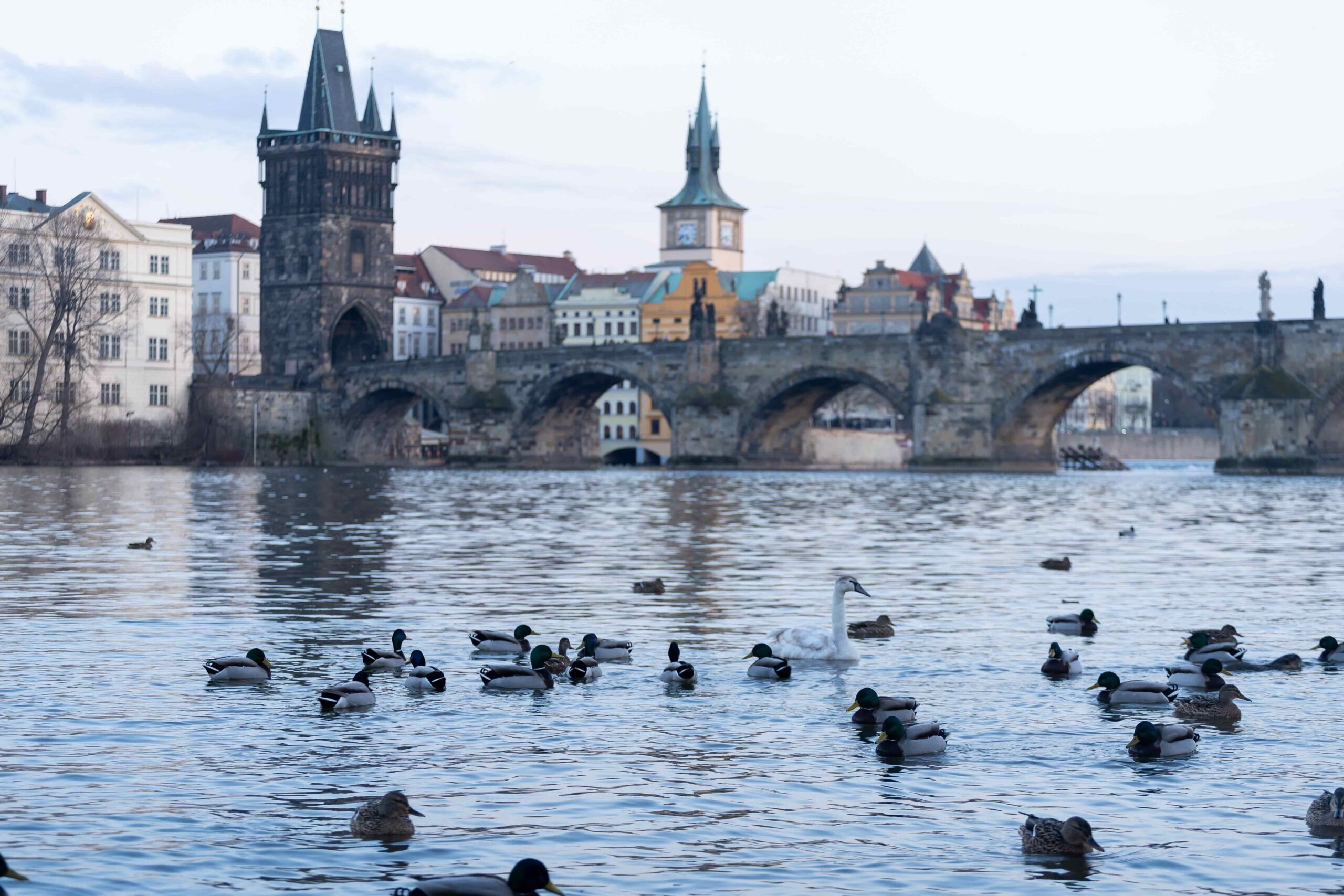
The Charles Bridge
The Charles Bridge in Prague is a well-known landmark that connects the city’s Old Town and Lesser Town. Its first building began in the 14th century. During the day, it is a popular destination for performers, artists, and merchants.
St. Vitus Cathedral
The Metropolitan Cathedral of Saints Vitus, Wenceslaus, and Adalbert is the seat of the Archbishop of Prague. This cathedral is a renowned example of Gothic architecture and the country’s largest and most important church. The cathedral is located within Prague Castle and contains the tombs of several Bohemian kings and Holy Roman Emperors.
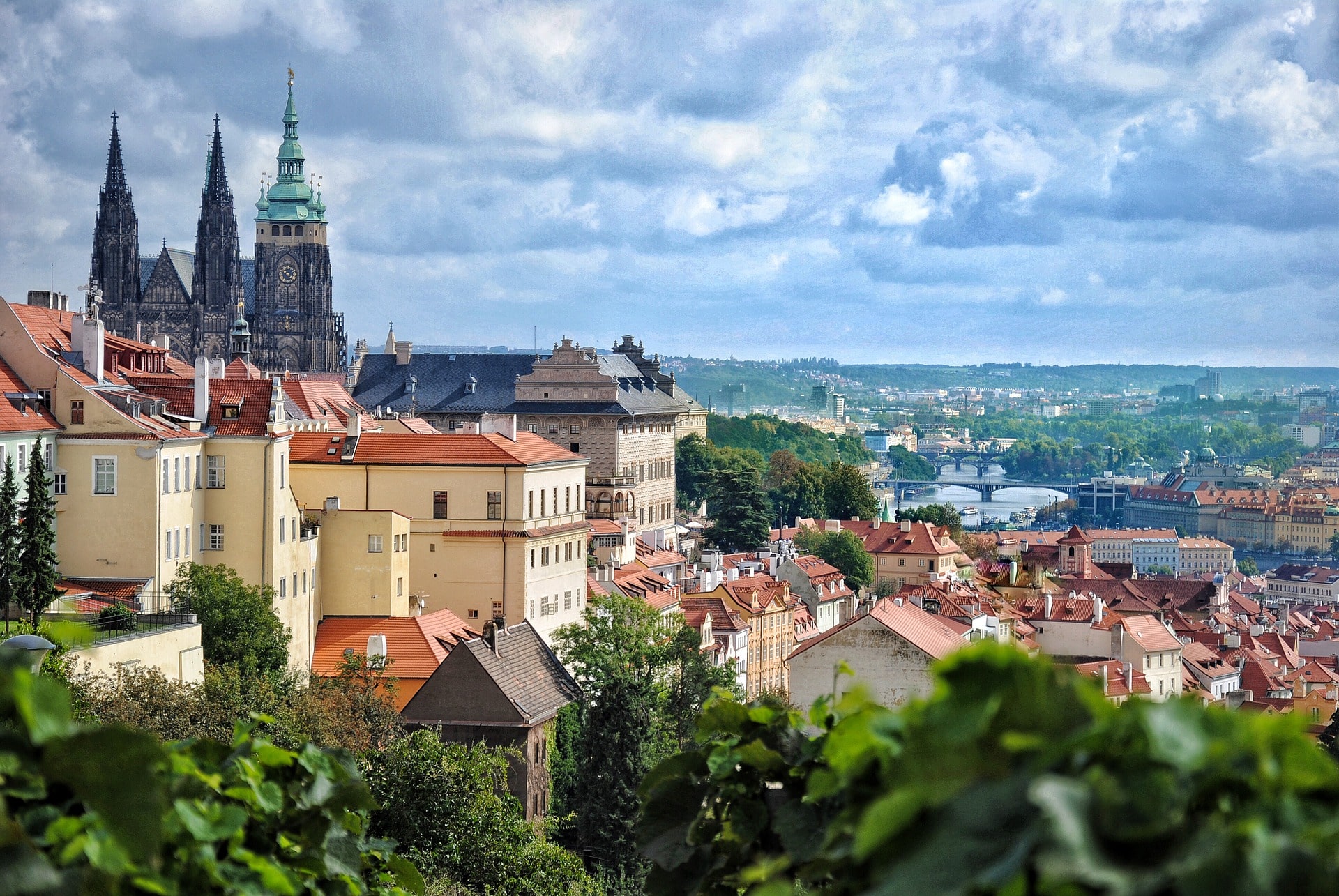

The Prague Castle
This castle has a great view of Prague. The St. Vitus Cathedral and observation tower, the Castle Picture Gallery, various palaces and museums, and the Royal Gardens are also part of it. It is an important tourist attraction in the city. Prague Castle is a 9th-century castle complex in Prague, Czech Republic. It is the official residence of the Czech Republic’s President. The castle served as a residence for Bohemian monarchs, Holy Roman emperors, and Czechoslovakian presidents. The Bohemian Crown Jewels are stored in a secret compartment within it.
Karlštejn Castle
Karlštejn Fortress is a massive Gothic castle that Charles IV, Holy Roman Emperor-elect and King of Bohemia, erected in 1348. The palace housed the Imperial Regalia, as well as the Bohemian Crown Jewels, religious relics, and other royal artifacts.


Bohemian Switzerland Park
Bohemian Switzerland, sometimes known as Czech Switzerland, is a gorgeous region in the Czech Republic’s northwestern corner. It is located on both banks of the Elbe River and its highest point is the peak of Děčínský Sněžník, which rises 723 meters above sea level. It has been designated as a protected area since 1972. On January 1, 2000, the territory along the right bank of the Elbe was designated as the Bohemian Switzerland National Park. The National Park borders the German Saxon Switzerland National Park.
7-day Itinerary in Czechia
Day 1
Arrive at Prague
Hello and welcome to the Czech Republic! Order of the day after landing at Václav Havel Prague Airport. Take whatever transportation that suits you and make your way to your hotel to drop off your baggage.
This picturesque metropolis of bridges, cathedrals, gold-tipped turrets, and church spires is also Europe’s fourteenth biggest city. As soon as you step near the center, you will feel transported to another age.

Leave your things, and proceed directly to Prague Castle. During peak season, lines at the castle may be rather long, so arrive as early as possible. There’s a lot to see and do at Prague Castle, which holds the Guinness World Record for the world’s biggest historic castle complex. If you become hungry while you’re there, head to the neighboring Strahov Monastic Brewery for a classic Czech meal and some fresh beer produced on-site.
After you’ve had your fill, make your way down the hill via Lesser Town to Charles Bridge. The bridge dates from the 1300s and is one of Prague’s most iconic landmarks. Take your time walking across the bridge, appreciating the replica sculptures and the stunning vistas of Prague Castle behind you. On the other side of Charles Bridge, you’ll enter Old Town.
Make your way through the twisting alleyways to Old Town Square, where you can see Prague’s spectacular gothic architecture and view the famous astronomical clock. Enjoy a casual supper and beverages at a local traditional Czech restaurant, then end your day by going back to your accommodation and preparing for the next day.

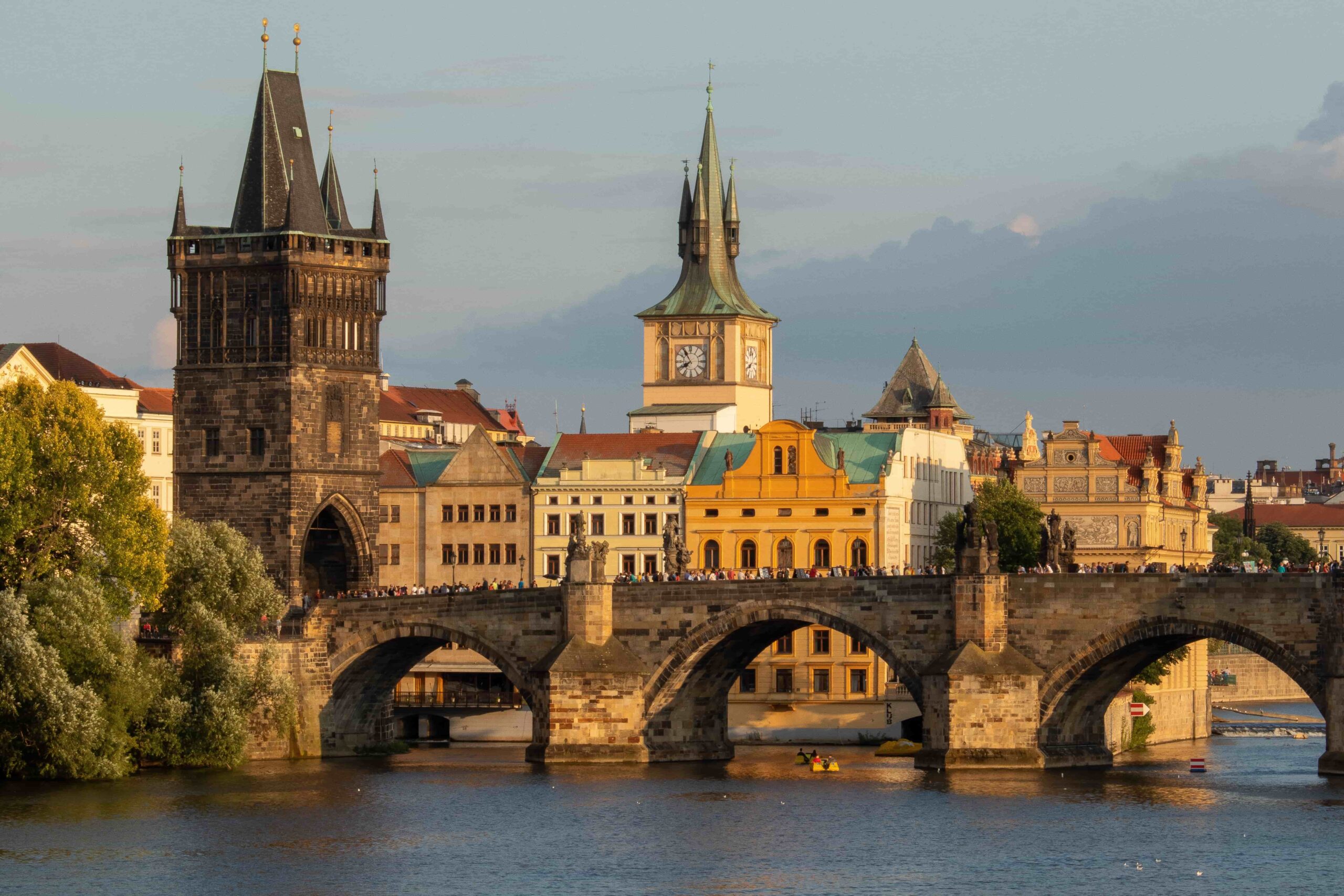

- Backpacker:
- Budget:
- Mid-range:
- Luxury:
When it becomes dark, a foreign city may be twice as dangerous - especially if you don't understand the language and are unfamiliar with the area. There is no reason to be alarmed about walking home alone in the dark as there is not enough crime recorded in Prague to warrant any bit of worry. You can walk safely at night and never worry about crowded areas or unlit alleys or streets, but you can always take a taxi, if you don't feel comfortable. However, be wary of petty crime by taking precautions mentioned in the safety section above.
From the Airport to the Center
You can take the bus or rail station form the airport. Using the well-connected public transit system will be the cheapest option, but if you have a lot of luggage, a ride-sharing app may be easier. We recommend avoiding cabs waiting at the station or airport, since they will most likely charge significantly more than alternative options. To avoid price gouging, select an approved airport service such as FIX Taxi or Taxi Praha.
From Prague to Kutná
Several trains and buses run between Kutná and Prague throughout the day. The train ride to Kutná Hora central station (hlavn nádra) takes around 1 hour. You may then take another train or bus into the city center, or take a tourist minibus directly to the Sedlec Ossuary and St. Barbara's Cathedral.
Day 2
Day Trip from Prague
On day two, get up early and get a short bite to eat before going out on a day trip. It may be tough to select where to go because there are so many fantastic places to see in a day from Prague. Whatever you select, a trip to Kutná Hora, Pilsen, or Terezin will not disappoint.
Sedlec Abbey’s ossuary is a UNESCO World Heritage Site known for its gigantic chandelier made of human bones. It shows how brutal people where through the ages.


Pilsen (Plze) is a great place to spend the day drinking and learning about the country’s famous beer. Pilsen is the Czech Republic’s fourth largest city and is best known as the origin of pilsner beer. The travel by bus or train takes around an hour and a half and is just 56 miles (90 kilometers) west of Prague. Visit the Pilsner Urquell brewery for an in-depth look at Czech brewing tradition and to enjoy some of the country’s freshest beer.
On a day trip from Prague, you may also visit the Theresienstadt Ghetto concentration camp near Terezín. A solemn and significant venue, a visit to this memorial to Nazi victims will undoubtedly be a touching experience.
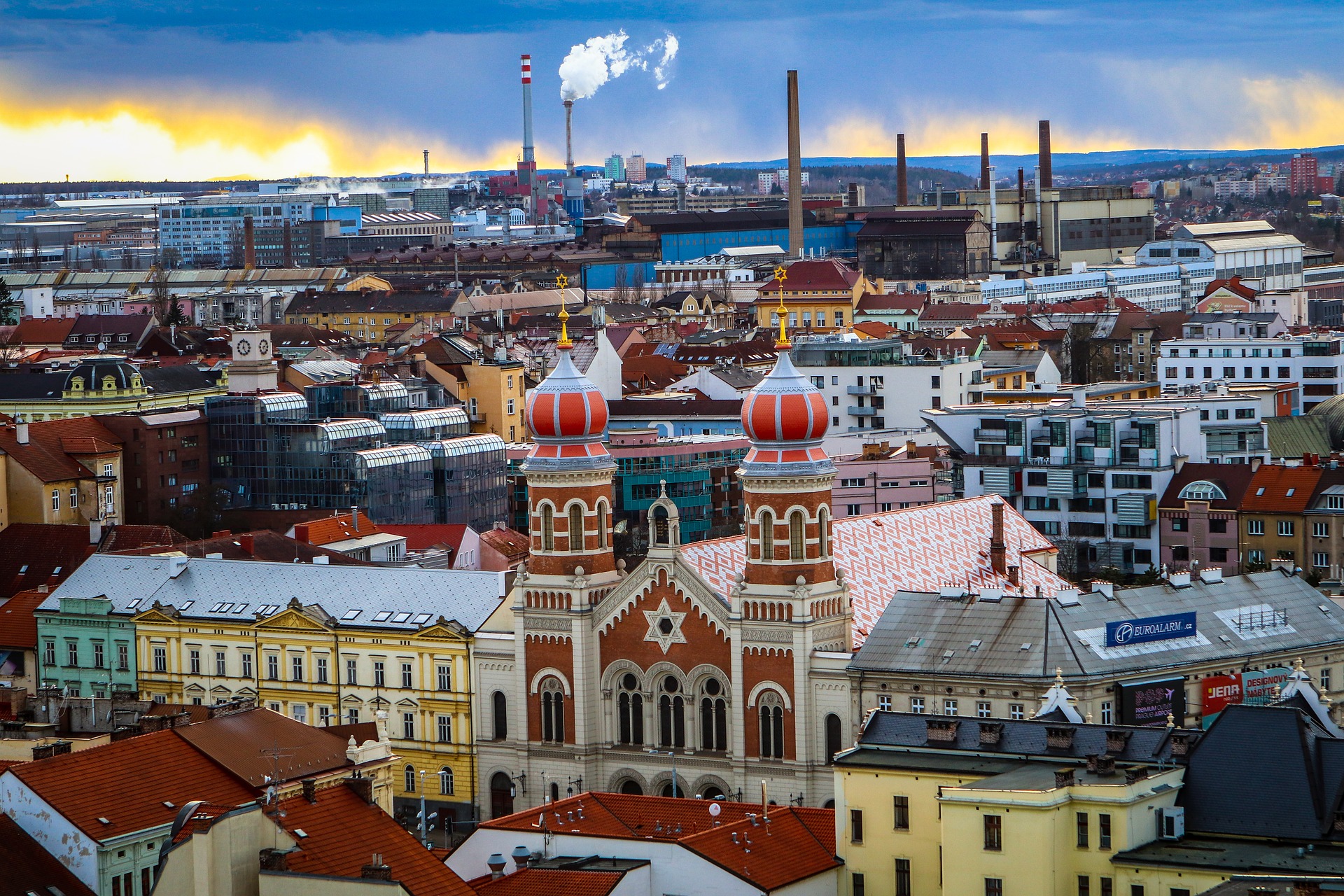



Day 3
Head to Český Krumlov
Take your time in the morning to recoup from the previous day’s activities. Enjoy a delicious breakfast in one of Prague’s well-known cafés, such as Café Savoy or Café Louvre. Take your car, bus or train to Český Krumlov after breakfast. This journey will take around three hours, so pack something to distract yourself with if you’re taking public transport.
One of the most stunning towns in the Czech Republic is Český Krumlov. Its historic center, which goes back to the 14th century, is a UNESCO World Heritage Site. Spend the day wandering around the region and taking in the sights. For the evening, visit the Eggenberg brewery, which was founded in 1560, and have a classic Czech meal paired with some locally brewed beer. If the brewery appears familiar, it’s because it’s been featured in movies including “The Illusionist” and “Hostel.”
- Backpacker:
- Budget:
- Mid-range:
- Luxury:
When it becomes dark, a foreign city may be twice as dangerous - especially if you don't understand the language and are unfamiliar with the area. There is no reason to be alarmed about walking home alone in the dark as there is not enough crime recorded in Český Krumlov to warrant any bit of worry. You can walk safely at night and never worry about crowded areas or unlit alleys or streets, but you can always take a taxi, if you don't feel comfortable. However, be wary of petty crime by taking precautions mentioned in the safety section above.
Day 4
Explore More
Begin the day with a visit to the awe-inspiring Český Krumlov Castle, the Czech Republic’s second largest castle complex. Its history dates back to 1240, and legend has it that the moat was originally filled with bears instead of water to keep attackers out. While you’re there, don’t miss the castle’s Baroque theater, which was built in the 1680s and is one of the best preserved theaters of its sort in the world.
Return to Prague after touring the castle and its grounds for a peaceful evening exploring the city’s Jewish district. Because you’re likely to spend a large amount of time visiting the castle in the morning and the travel back takes roughly three hours, many of the area’s big attractions will be closed, but you’ll still be able to enjoy the ambience. Stop into King Solomon, the Czech Republic’s oldest kosher restaurant, for some classic Jewish fare.

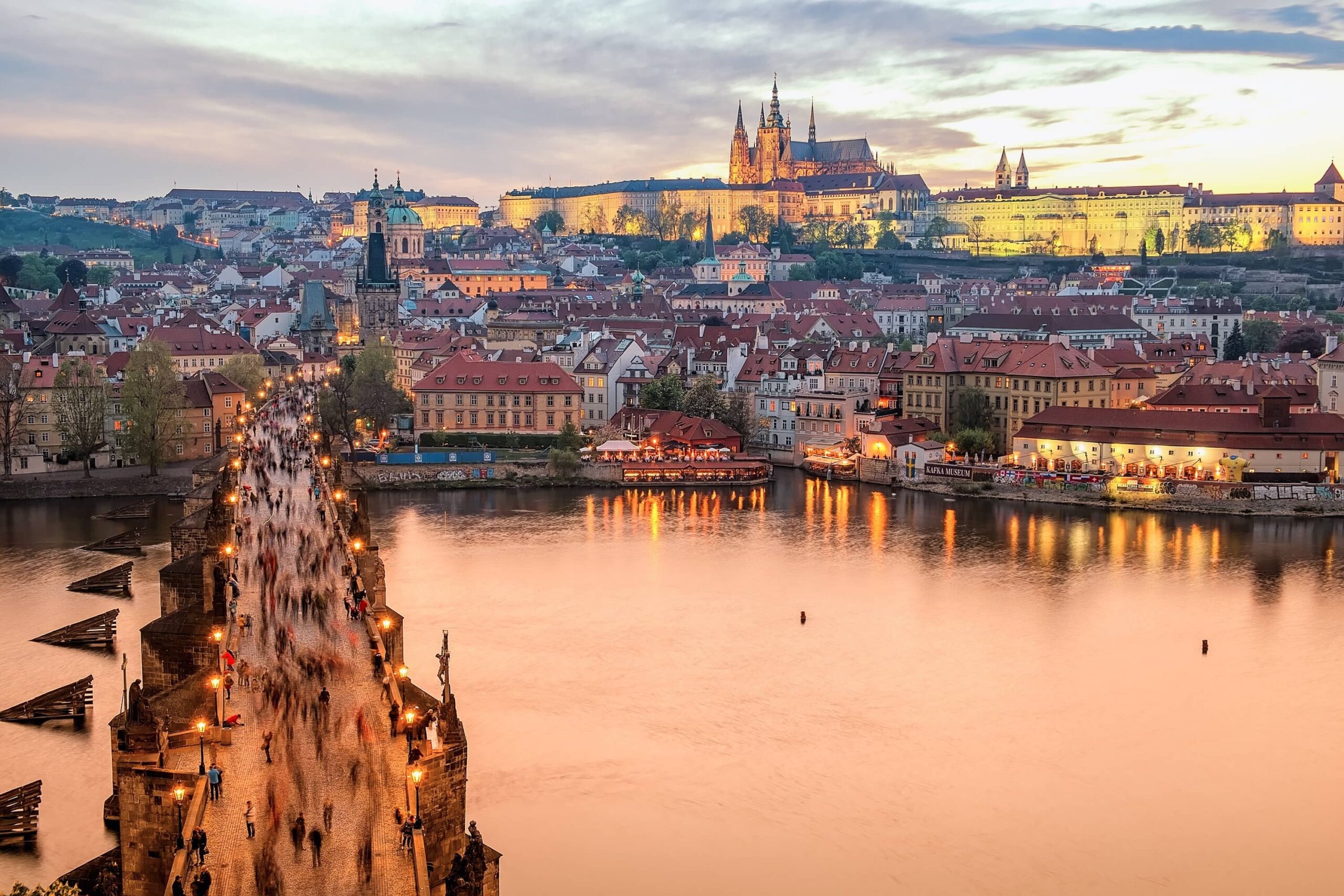

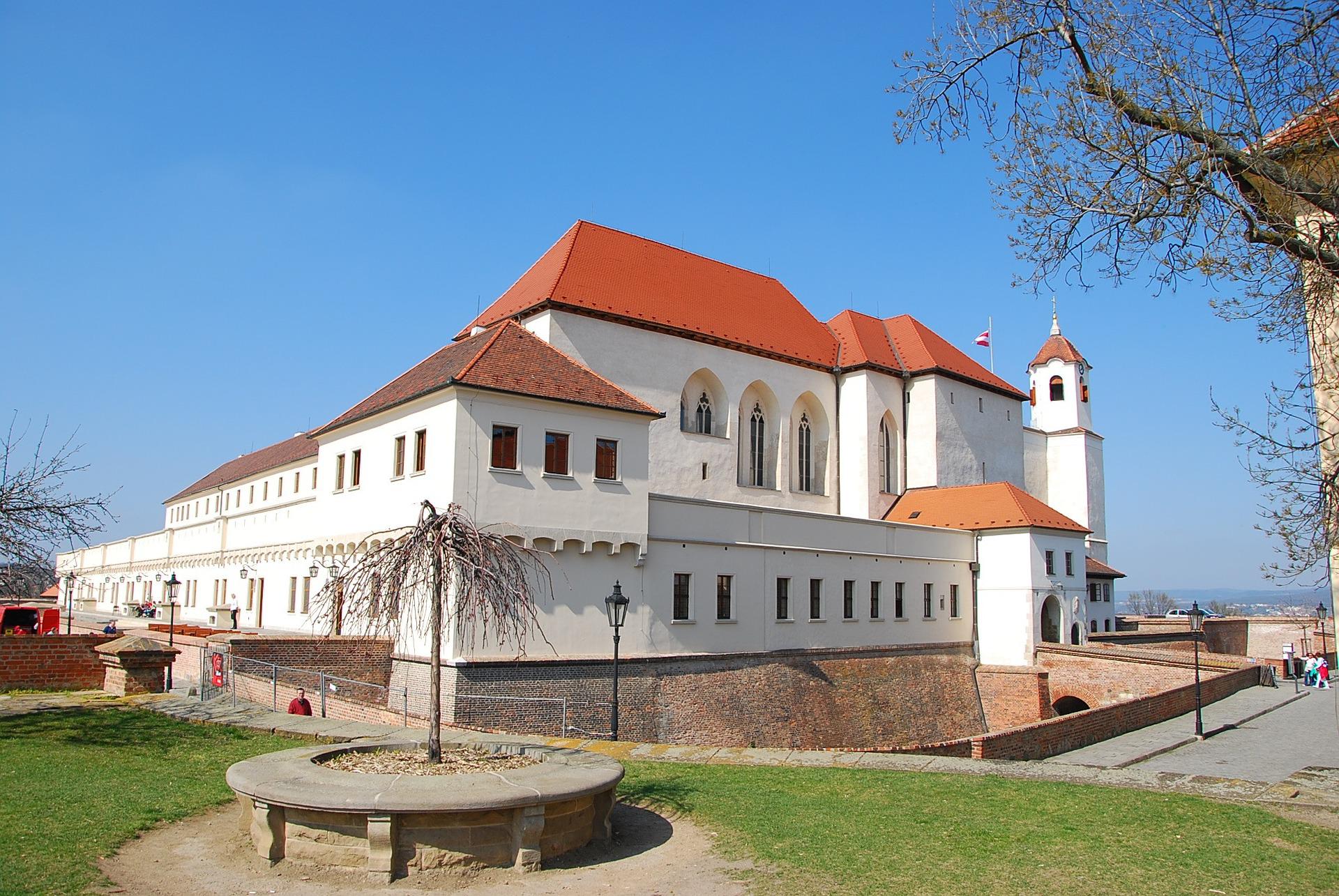
Day 5
Off to Brno
In the morning, take the train or bus to Brno, the Czech Republic’s second-largest city and the capital of the Moravia region. You’ll notice right away that Brno has a distinct atmosphere than Prague. The population is significantly younger, and there are far less visitors. As a result, prices are often lower than in the main city. Have some lunch in the heart of the city center then make your way to the next stop.
After you’ve had your fill of the area around the main plaza, make your way up the hill to Špilberk Castle. This 13th-century fortification is surrounded by magnificent gardens and offers some of the greatest views of Brno. Make sure to get a ticket for the inmates housed beneath the jail. This section of the complex was formerly one of the most brutal jails in the Habsburg empire. This isn’t the only one of Brno’s best underground attractions.

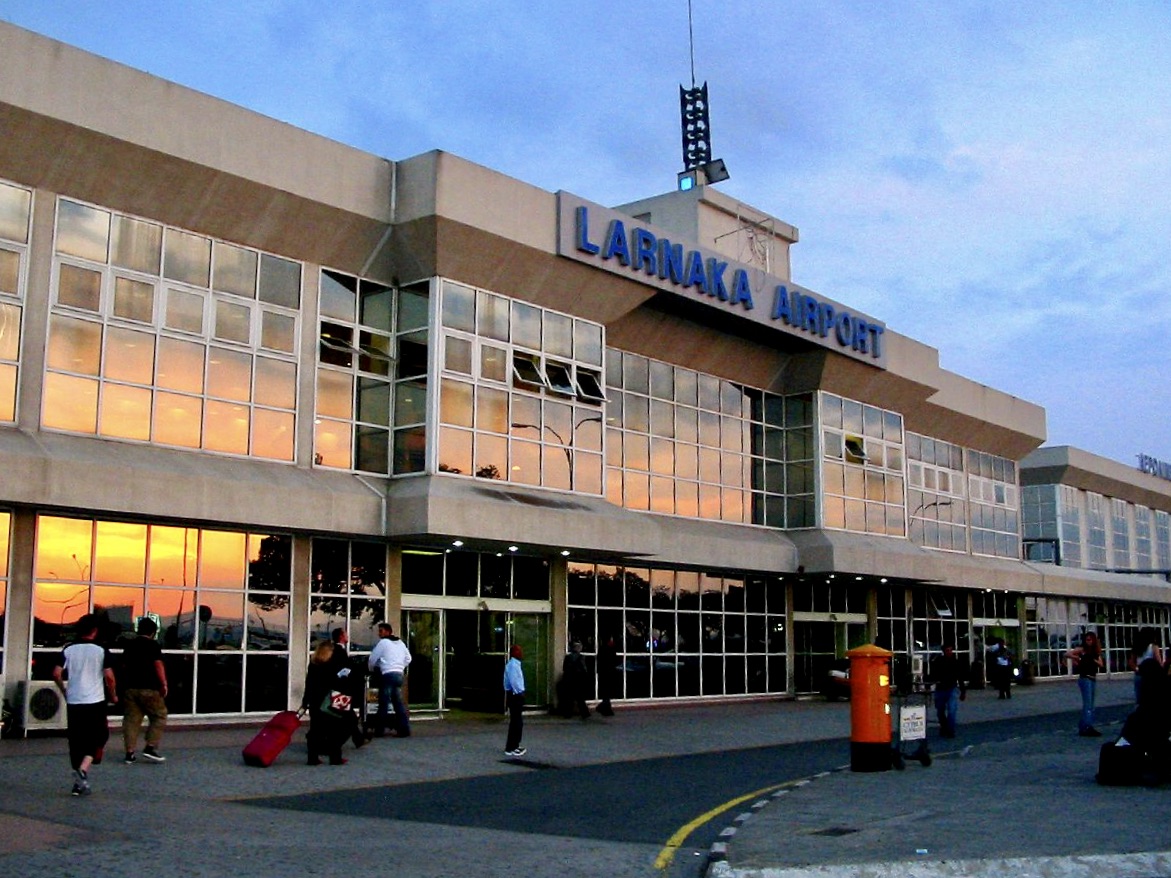
The 10-Z bunker carved into the slope of the hill on which Špilberk Castle stands was initially constructed under Nazi rule but was converted into a nuclear fallout shelter during the Communist regime. If you’re feeling daring, you can even spend the night in the bunker. The ossuary in the Church of St. James is the second largest in Europe and is well worth seeing. If you haven’t experienced enough eerie underground excursions, Brno’s 17th-century Capuchin Crypt is home to 41 naturally mummified monks.
After such an eventful day, you’ll most certainly want to unwind with a big lunch and a few drinks. Lokál U Caipla serves traditional Czech meals and fresh Pilsner from the tank.
- Backpacker:
- Budget:
- Mid-range:
- Luxury:
When it becomes dark, a foreign city may be twice as dangerous - especially if you don't understand the language and are unfamiliar with the area. There is no reason to be alarmed about walking home alone in the dark as there is not enough crime recorded in Brno to warrant any bit of worry. You can walk safely at night and never worry about crowded areas or unlit alleys or streets, but you can always take a taxi, if you don't feel comfortable. However, be wary of petty crime by taking precautions mentioned in the safety section above.
From Brno to Prague
Make your way down to the railway or bus terminal from there. The bus ride back to Prague takes around two and a half hours, although it may take longer owing to high traffic between the two cities. The train is frequently less expensive than the bus, with train tickets from the company Regiojet costing around $4 for the low-cost option and $10 for business class. You won't have to worry about taking public transit or hailing a cab because the railway and bus stations are both within walking distance of the city center.
Day 6
Day Trip from Brno
Olomouc is an excellent day excursion from Brno, with buses and trains running frequently between the two cities. Despite being the country’s sixth-largest city, Olomouc feels fairly quaint, and its main plaza is home to the Holy Trinity Column, a UNESCO World Heritage Site. The Saint Wenceslas Cathedral is well worth a visit, and its southern tower is the Czech Republic’s second highest church tower.
Return to Brno in the evening to take advantage of the city’s fantastic nightlife. When you’re done, head to your accommodation and get ready for your trip back to Prague tomorrow.



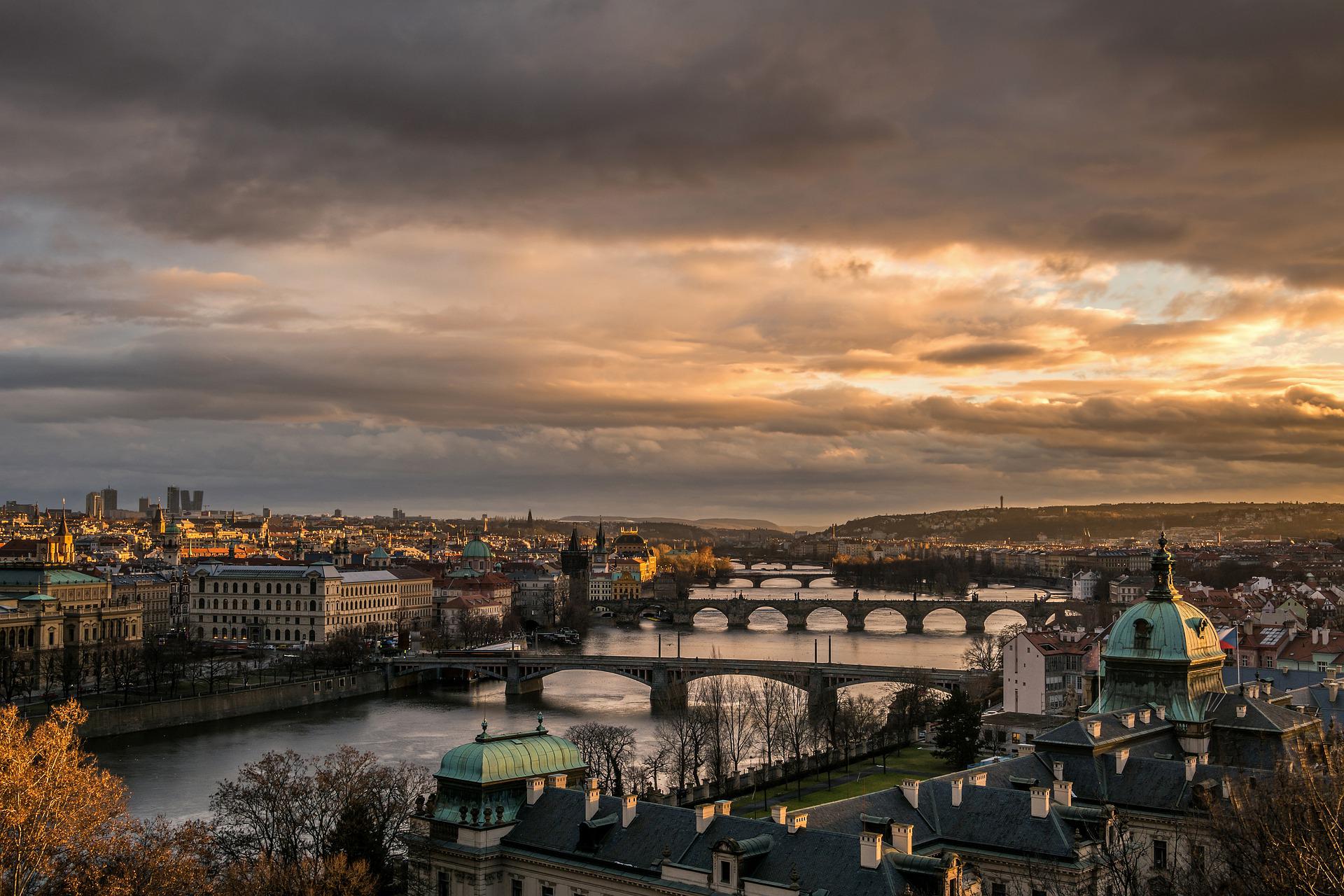
Day 7
Back to Prague
Begin your final morning in the Czech Republic with one of the wonderful eggs benedicts and coffee at Brno’s Bavard café. After breakfast, have a look at the Brno “dragon” in the Town Hall before heading to the Vegetable Market (Zelný trh), a popular farmers market on the square every day except Sunday. Wander among the booths and then up the Petrov hill to the Cathedral of St. Peter and Paul, where you can see the church’s magnificence up close and get a bird’s-eye perspective over the city.
Have supper back in Prague and then go along the banks of the Vltava River for one more look at Prague’s magnificent castle before you leave.
Day 8
Departue
Begin your final morning in the Czech Republic with one of the wonderful eggs benedicts and coffee at

The Most Popular Food in Czechia
Czech cuisine was traditionally affected by the neighboring areas that ruled the country. Traditional Czech cuisine is very rich and satisfying. It may be highly rich and saucy, although attempts have been made in recent years to make the meals lighter and incorporate more vegetables. Czech dumplings are substantial, and many meat dishes are served with a robust sauce. Beer is also a popular beverage throughout the country.
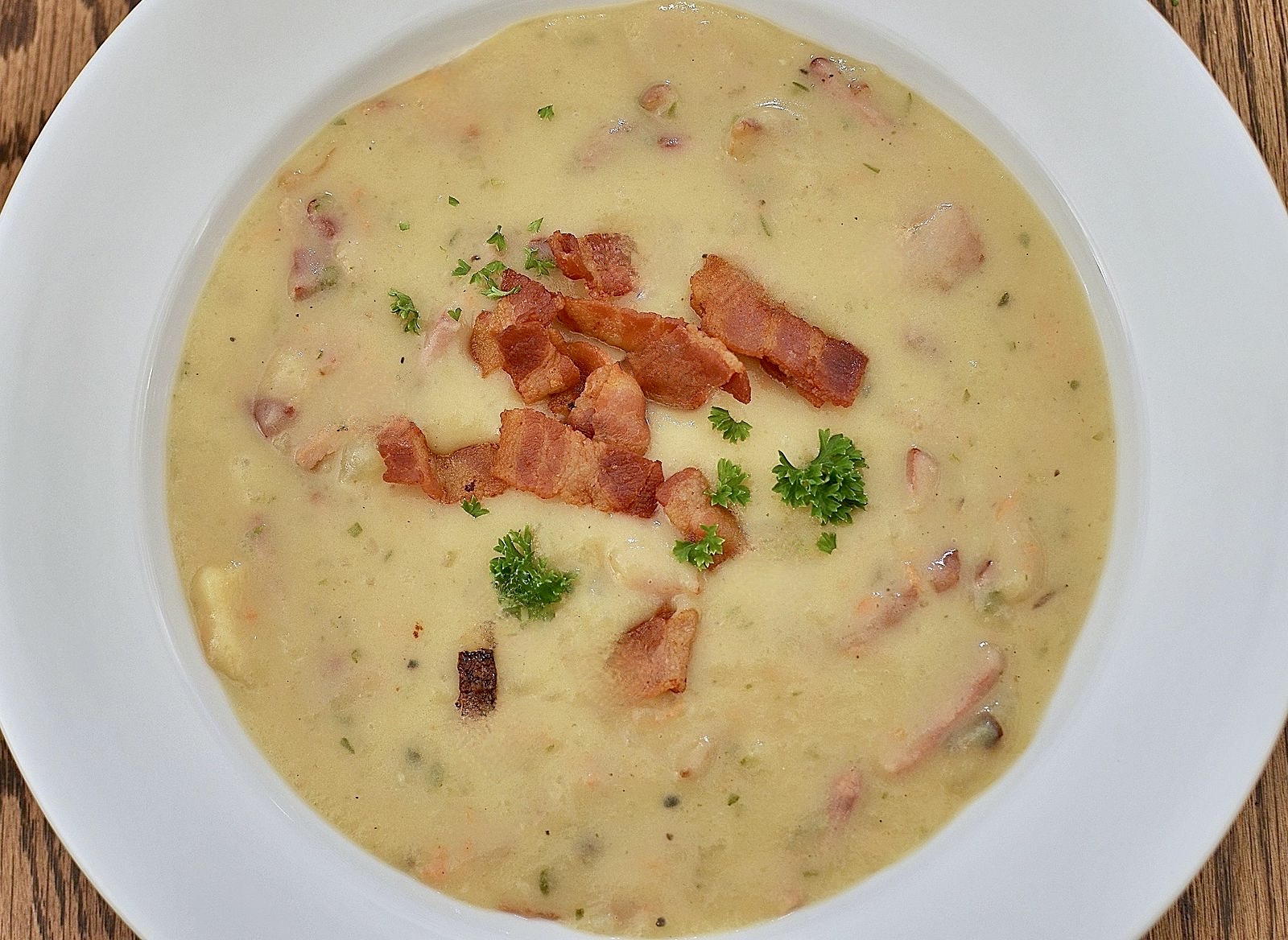
Bramboracka
Soups are a prominent dish in Czech cuisine. This is a popular potato soup that can be served with or without wild mushrooms.
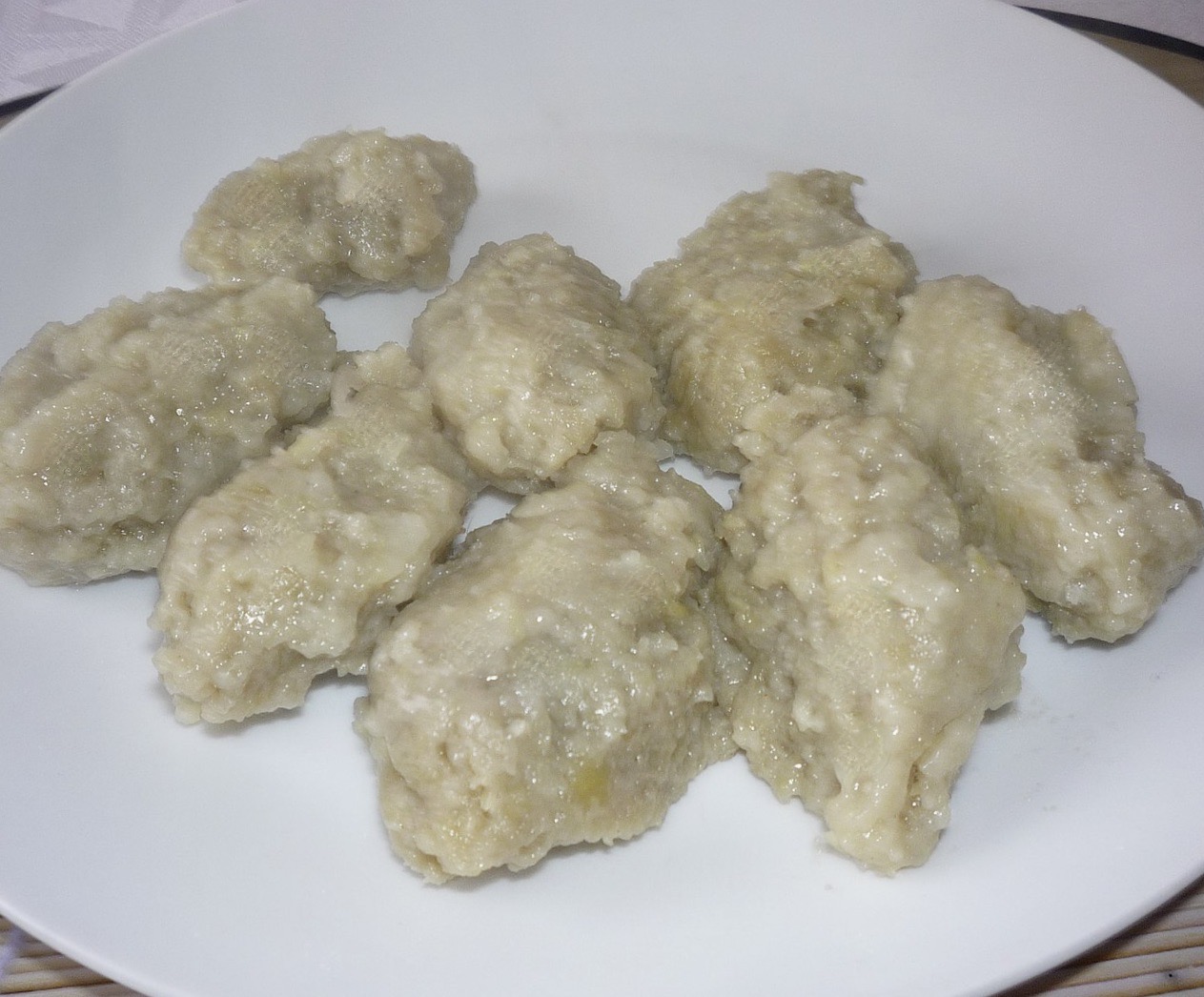
Knedliky
Knedliky are dumplings from the Czech Republic are a popular side dish across the country. They are often prepared from boiling bread and served with pig or another meat, while some are filled with a filling and served as a main course.

Svíčková na smetaně (marinated sirloin)
Braised meat is topped with a rich, creamy sauce of parsley root and carrots in this classic meal. It’s frequently served with cranberry sauce and whipped cream on the side.

Uzené
Uzené literally means “just smoked,” yet the meal is usually cooked with meat. As a garnish, juniper berries and peppers are frequently utilized.
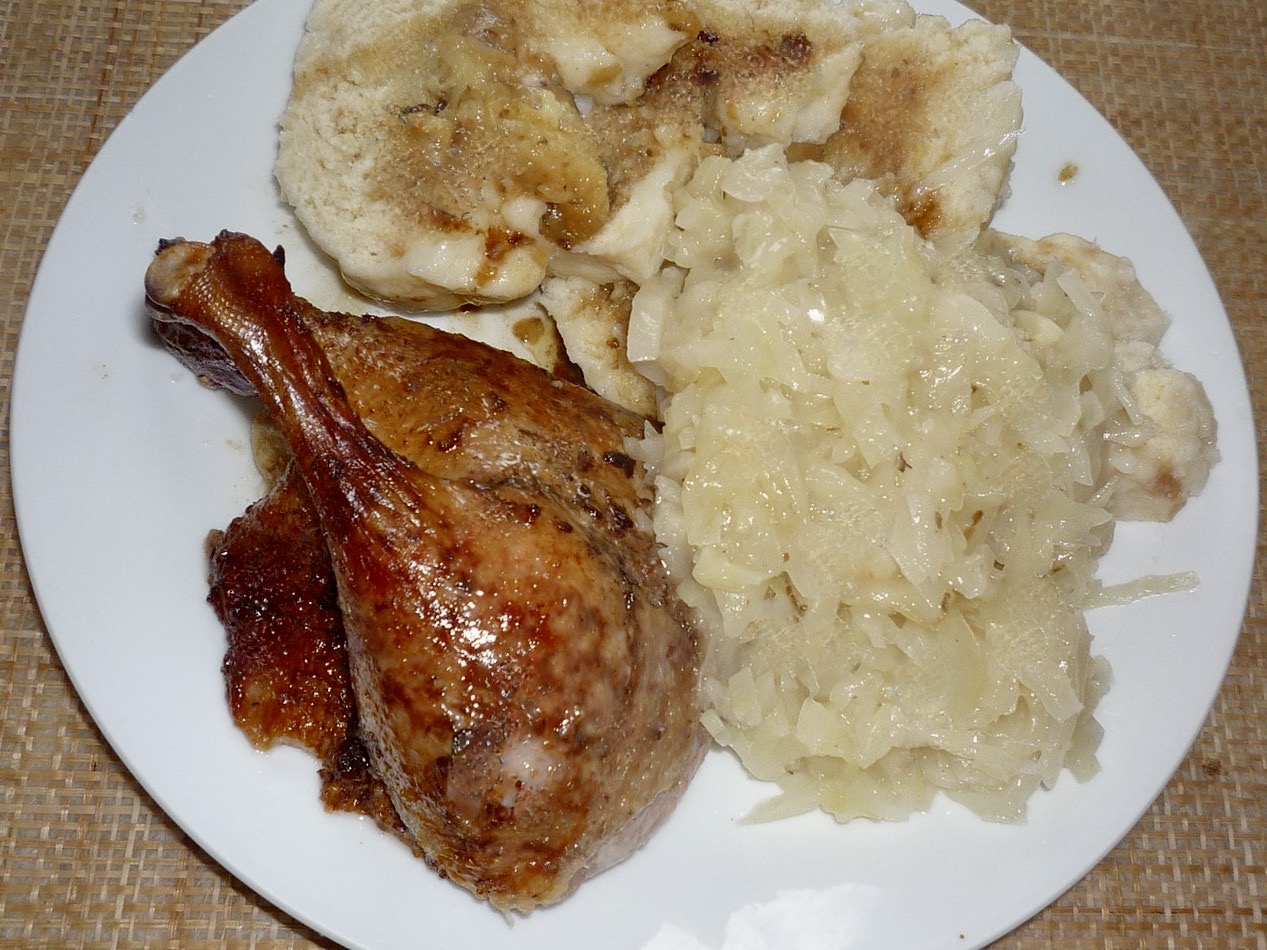
Pecena Kachna
Pecena Kachna is a traditional Czech meal created with roasted duck and is served with bread or dumplings with red and white sauerkraut.
What's the Travel Budget for Czechia?
Flights
- Flights start at roughly $18 from nearby countries. Tickets however on average cost around $270 and can cost way more depending on which class and from which country you depart from.
Accommodation
- Nomad Backpacking style travelers can expect to spend around $250 for a week
- Budget travelers can expect to spend around $370 for a week
- Mid-range travelers can expect to spend around $630 for a week
- Luxury travelers can expect to spend around $1,120 for a week
Food Budget (Three meals and drinks)
- Nomad Backpacking style travelers can expect to spend around $12 per person per day
- Budget travelers can expect to pay around $20 per person per day
- Mid-range travelers on average would cost $25 to $35 per person per day
- Luxury travelers can expect to pay around $40 to $70 per person per day
Overall Budget Styles (Not including Flights, Tours, Transportation, or Car Rental)
- Nomad Backpacking style travelers can expect to spend roughly $360 for a week
- Budget travelers can expect to spend close to $550 for one person for a week
- Mid-range travelers can expect to spend approximately $910 for one person for a week
- Luxury travelers can expect to spend around $1,650 for one person for a week
Flights
- Flights start at roughly $18 from nearby countries. Tickets however on average cost around $270 and can cost way more depending on which class and from which country you depart from.
Accommodation
- Nomad Backpacking style travelers can expect to spend around $250 for a week
- Budget travelers can expect to spend around $370 for a week
- Mid-range travelers can expect to spend around $630 for a week
- Luxury travelers can expect to spend around $1,120 for a week
Food Budget (Three meals and drinks)
- Nomad Backpacking style travelers can expect to spend around $12 per person per day
- Budget travelers can expect to pay around $20 per person per day
- Mid-range travelers on average would cost $25 to $35 per person per day
- Luxury travelers can expect to pay around $40 to $70 per person per day
Overall Budget Styles (Not including Flights, Tours, Transportation, or Car Rental)
- Nomad Backpacking style travelers can expect to spend roughly $360 for a week
- Budget travelers can expect to spend close to $550 for one person for a week
- Mid-range travelers can expect to spend approximately $910 for one person for a week
- Luxury travelers can expect to spend around $1,650 for one person for a week
Flights
- Flights start at roughly $18 from nearby countries. Tickets however on average cost around $270 and can cost way more depending on which class and from which country you depart from.
Accommodation
- Nomad Backpacking style travelers can expect to spend around $250 for a week
- Budget travelers can expect to spend around $370 for a week
- Mid-range travelers can expect to spend around $630 for a week
- Luxury travelers can expect to spend around $1,120 for a week
Food Budget (Three meals and drinks)
- Nomad Backpacking style travelers can expect to spend around $12 per person per day
- Budget travelers can expect to pay around $20 per person per day
- Mid-range travelers on average would cost $25 to $35 per person per day
- Luxury travelers can expect to pay around $40 to $70 per person per day
Overall Budget Styles (Not including Flights, Tours, Transportation, or Car Rental)
- Nomad Backpacking style travelers can expect to spend roughly $360 for a week
- Budget travelers can expect to spend close to $550 for one person for a week
- Mid-range travelers can expect to spend approximately $910 for one person for a week
- Luxury travelers can expect to spend around $1,650 for one person for a week
Flights
- Flights start at roughly $18 from nearby countries. Tickets however on average cost around $270 and can cost way more depending on which class and from which country you depart from.
Accommodation
- Nomad Backpacking style travelers can expect to spend around $250 for a week
- Budget travelers can expect to spend around $370 for a week
- Mid-range travelers can expect to spend around $630 for a week
- Luxury travelers can expect to spend around $1,120 for a week
Food Budget (Three meals and drinks)
- Nomad Backpacking style travelers can expect to spend around $12 per person per day
- Budget travelers can expect to pay around $20 per person per day
- Mid-range travelers on average would cost $25 to $35 per person per day
- Luxury travelers can expect to pay around $40 to $70 per person per day
Overall Budget Styles (Not including Flights, Tours, Transportation, or Car Rental)
- Nomad Backpacking style travelers can expect to spend roughly $360 for a week
- Budget travelers can expect to spend close to $550 for one person for a week
- Mid-range travelers can expect to spend approximately $910 for one person for a week
- Luxury travelers can expect to spend around $1,650 for one person for a week
If you want to know what to pack, read this list below:
- This is a casual European country with mild to warm that tends to be hot in the summer, and freezing in the winter, dress accordingly
- Raincoat or Light Waterproof Jacket
- Hiking Boots or Sturdy Sneakers (Shoes You Don’t Mind Getting Wet)
- Sunscreen
- Insect Protection – Repellent and Clothing
- Sunglasses and Sun Hat
- Water Shoes
- Beach Towels/Sarong
- Dry Bag
- Money Belt or Cross Bag
- Portable Medical Kit
- Flashlight or Headlamp
- Copies of your passport.
- Get all the needed vaccinations before traveling
- A power bank is a must in any travel.
- Always have some cash with you just in case there are no ATMs and if you are dealing with a business that solely accepts cash
- Get yourself an adapter for your gadgets
- 1 toothbrush
- 1 tube of toothpaste
- 1 razor
- 1 package of dental floss
- 1 small bottle of shampoo
- 1 small bottle of shower gel
- 1 towel
- Deodorant
- Band-Aids
- Hydrocortisone cream
- Antibacterial cream
- Earplugs
- Tylenol
- Hand sanitizer (germs = sick = bad holiday)
- A key or combination lock
- Zip-lock bags
- Plastic bags (great for laundry)
- Universal charger/adaptor
- LifeStraw (A water bottle with a purifier)
- 1 dry shampoo spray & talc powder
- 1 hairbrush
- Makeup you use
- Hairbands & hair clips
- Feminine hygiene products
Clothing For Boys
- 1 pair of jeans or khaki pants
- 1 pair of shorts
- 1 bathing suit
- 5 T-shirts
- 1 long-sleeved T-shirt
- 1 pair of flip-flops
- 1 pair of sneakers
- 6 pairs of socks
- 5 pairs of boxer shorts
Clothing For Girls
- 1 swimsuit
- 1 sarong
- 1 pair of stretchy jeans
- 1 pair of leggings
- 2-3 long-sleeve tops
- 2-3 T-shirts
- 3-4 spaghetti tops
- 1 light cardigan
Want to plan your own trip, here are some of the best resources that can help you
- Skyscanner – They search small websites and budget airlines that larger search sites tend to miss. They are hands down the number one place to start.
- Momondo – This is another favorite flight search engine because they search such a wide variety of sites and airlines. Always check here too.
- Booking.com – The best all-around booking site that constantly provides the most affordable and lowest rates. They have the widest selection of budget accommodation.
- Couchsurfing – This website allows you to stay on people’s couches or spare rooms for free. It’s a great way to save money while meeting locals who can tell you the ins and outs of their city. The site also lists events you can attend to meet people (even if you’re not staying with someone).
- Intrepid Travel – If you want to do group tours, go with Intrepid. They offer good small group tours that use local operators and leave a small environmental footprint.
- Grassroots Volunteering – For volunteering, Grassroots Volunteering compiles a list of good local volunteer organizations that keep the money within the community.
- Get Your Guide – Get Your Guide is a huge online marketplace for tours and excursions. They have tons of tour options available in cities all around the world, including everything from cooking classes, walking tours, street art lessons, and more! It has the world’s largest collection of things to do with more than 30,000 activities in 7500 destinations.
- SafetyWing – Safety Wing offers convenient and affordable plans tailored to digital nomads and long-term travelers. They have cheap monthly plans, great customer service, and an easy-to-use claims process that makes it perfect for those on the road.
- Trip Advisor: Check the reviews and then book your accommodation. TripAdvisor is where you go when you want to compare prices with multiple accommodation providers.
- VRBO: is the main search engine to use when you are looking for a home or apartment rental. It can sometimes be cheaper than hotels and it is the best way to stay in areas that offer a more local feel.
- Hostelworld: With one of the largest databases of hostels in the world, Hostelworld is the go-to site when you are looking for budget accommodation.
- Rome 2 Rio: If you want to see how to get somewhere by plane, train, bus, ferry, or car Rome2Rio lays it all out for you as well as related costs.
- World Nomads Insurance: When traveling you should always have travel insurance. We have found the best bang for your buck is by far World Nomads.
Final Thoughts on Czechia
With its diverse relics of its turbulent past and rich heritage, breathtaking and unique landmarks, unbelievable hospitality, exciting festivals and events, and dazzling picture-perfect backdrop of national parks, pristine beaches, and ancient cities, Czechia has a refined and deep heritage that can be seen across the country dating back to at least the 400 BC. A fantastic option for anyone seeking one of the best European holiday locations nestled in Central Europe. Czechia is breathtakingly beautiful, with magnificent national treasures, flora and fauna, and spectacular scenery. Would you visit Czech Republic?
Have you ever been to Czech Republic? Please share your thoughts and experiences in the comments area below.